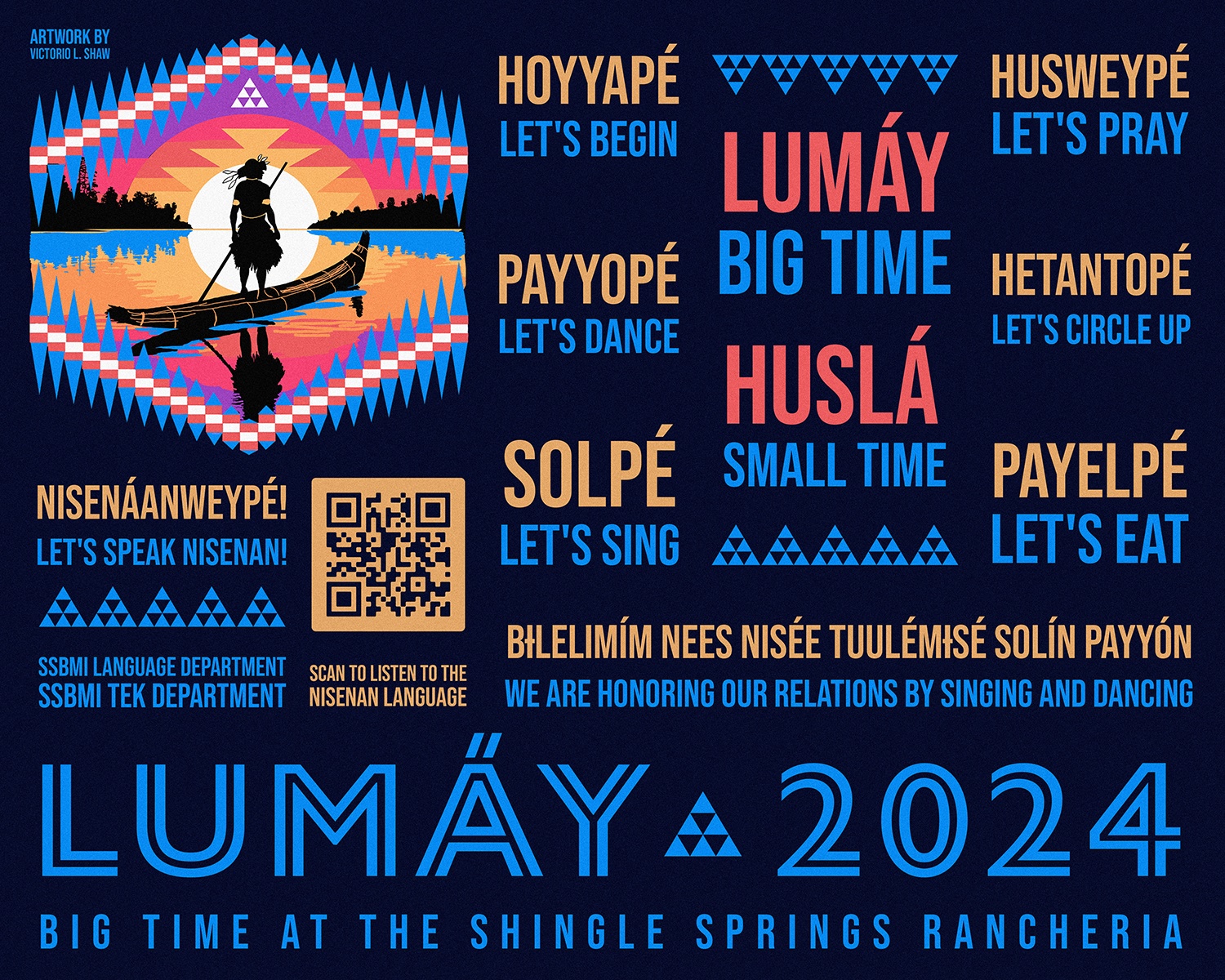Big Time 2024
The SSBMI Language Department and Traditional Ecological Knowledge Department created a Big Time-themed Nisenan language poster, which we shared at the Tribe's Lumáy (Big Time) celebration on August 24-25, 2024. Here, you can learn how to say these phrases.

The Tribe has ancestral ties to the Nisenan language through the Tribe's Matriarchs, Pamela Cleanso Adams and Annie Hill Murray Paris. Pamela, Annie, and many of their close relations spoke Nisenan and shared their language with researchers in the early 1900s. The knowledge they shared provides us with a pathway to reconnect with the Nisenan language today. The Tribe also has significant connections to ancestral Nisenan villages like Pusúune and Yáales, where the Nisenan language has been spoken since time immemorial.
We created and shared this Nisenan language poster to honor and reconnect with this part of the Tribe's heritage. Nisenáanweypé!
English
Let's speak Nisenan!
(said to 2+ people)
Nisenan
Nisenáanweypé!
Here are the Nisenan words for "Small Time" (Huslá) and "Big Time" (Lumáy). You may recognize these words from other Small Time and Big Time materials this year, such as the 2024 Big Time flyer which says Lumaydí Ɨdawwá! (Come to Big Time!):
Small Time
Huslá
Big Time
Lumáy
Esak’ábe mi? (Do you know?) Historically, Nisenan speakers used Lumáy to name all inter-community ceremonies & celebrations, all of which were called "Big Time" in English, and Huslá to name all ceremonies & celebrations held within one community or one family, all of which were called "Small Time" in English. Communities could hold multiple of these events in a year.
Today, we use the same names Huslá and Lumáy to name the Tribe's annual Small Time and Big Time celebrations, respectively.
Here are a few Nisenan phrases that you can use to talk about things that you may do at Huslá and Lumáy, such as dancing, singing, and eating:
Let's begin!
(said to 2+ people)
Hoyyapé!
Let's dance!
(said to 2+ people)
Payyopé!
Let's sing!
(said to 2+ people)
Solpé!
Let's pray!
(said to 2+ people)
Husweypé!
Let's circle up!
(said to 2+ people)
Hetantopé!
Let's eat!
(said to 2+ people)
Payelpé!
Finally, here is a Nisenan phrase that we shared to express some of the purpose behind Huslá and Lumáy activities:
We are honoring our relations by singing and dancing.
Bɨlelimím nees nisée tuulémɨsé solín payyón.